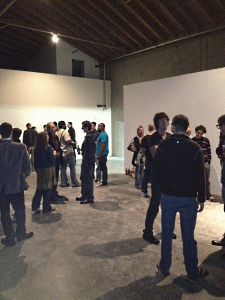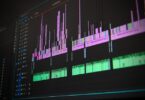aNewDomain — The recent LA Startup Week reminded me of those early days of personal computing and of the meet-up that may have initiated the LA startup community.
When personal computers were getting off the ground in the 1970s, hobbyists and budding entrepreneurs met at places like the Homebrew Computer Club in Palo Alto or the Southern California Computer Society in Los Angeles to talk about what they were doing and to help each other. There was idealistic, shared enthusiasm that we knew PCs were totally cool and were a “big deal.”
The line between competition and cooperation among entrepreneurs was fuzzy. So was the line between entrepreneurs and hobbyists. Competitors met for beers after meetings to talk about the boards they were designing and I recall Steve Wozniac offering copies of the schematic and parts list for his wire-wrapped computer at the Homebrew Club while Steve Jobs was behind a card table offering to sell them already assembled.
The early Internet days felt the same – the Net was clearly revolutionary, and it was born in an academic community with a culture that valued sharing and collaboration. The National Science Foundation backbone network (NSFNET) was established “to support open research and education in and among U.S. research and instructional institutions” – for-profit traffic was not acceptable. (NSF also established an International Connections Program, which subsidized NSFNET links from academic and research networks in other nations.)
The LA Startup Scene
 In April 2012, I attended the first meet-up of Tech Entrepreneurs of Venice, CA. It felt like the early PC days. There were no business suits or fancy offices. As you see below, we met in a warehouse (thanks to MovieClips) and stood around drinking beer — there’s always beer — and talking. But the attendees were not hobbyists and the focus was on business opportunities, not research and education.
In April 2012, I attended the first meet-up of Tech Entrepreneurs of Venice, CA. It felt like the early PC days. There were no business suits or fancy offices. As you see below, we met in a warehouse (thanks to MovieClips) and stood around drinking beer — there’s always beer — and talking. But the attendees were not hobbyists and the focus was on business opportunities, not research and education.
Venice is a small part of Los Angeles and might have seemed an unlikely place for the birth of the next “Silicon X,” but it has a history of avant-garde community and culture.
Venice was the heart of the LA beatnik community in the 1950s and the counter culture of the 1960s. The Peace and Freedom party was founded in Venice. The small city was the center of the LA art scene. The design studio of Charles and Ray Eames was also in Venice. The Eames were design rock stars who IBM turned to for their World Fair pavilion and many IT and education exhibits. They even designed the look of IBM mainframes — the Eames put the blue in “Big Blue.”
I don’t know if that meet-up marked the founding of “Silicon Beach” (a moniker also claimed by Miami), but it sure felt like it.
For aNewDomain, I’m Larry Press.
Ed: A version of this story ran on Larry Press’ laredcubana. Read it here.













